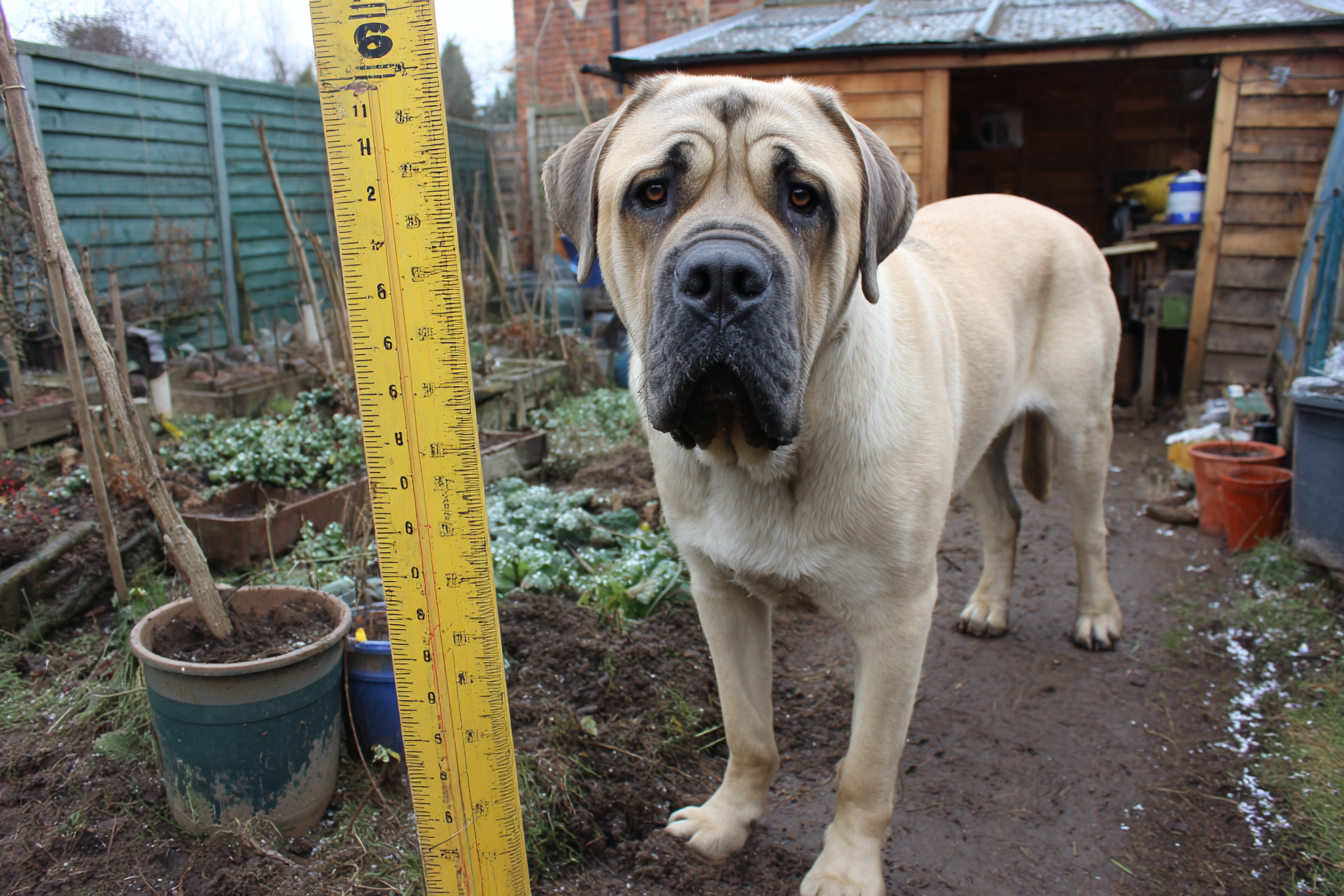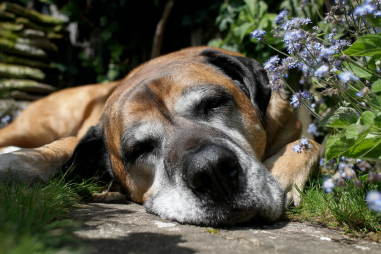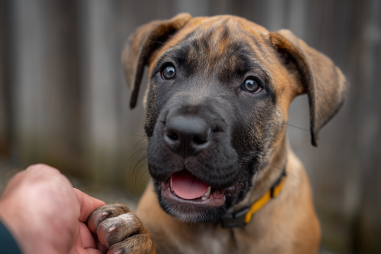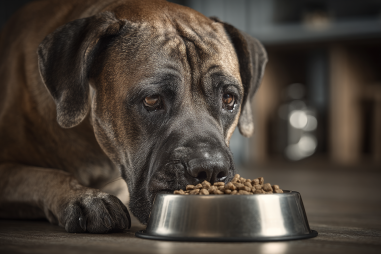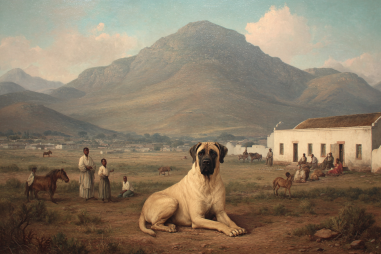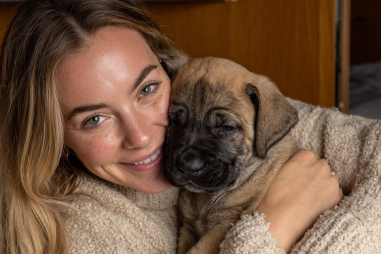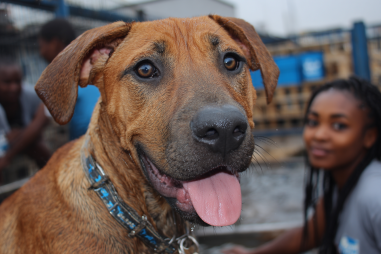Boerboels are truly majestic dogs known for their impressive size and loyal nature. If you’re bringing a Boerboel into your home or simply curious about what to expect as they grow, understanding their typical weight and height ranges is essential. This comprehensive guide will walk you through everything you need to know about Boerboel growth, offering insights into their size during different life stages, the factors that influence their development, and how best to care for them to ensure healthy growth throughout their lives.
Average Weight and Height Ranges by Age and Gender
Boerboels are among the largest dog breeds originating from South Africa, bred for guarding and working purposes. Their impressive build requires a good grasp of their typical weight and height milestones, especially for first-time owners or breeders.
Puppy Growth
From birth, Boerboel puppies show rapid growth. At birth, they generally weigh between 0.5 to 1 kilogram (1 to 2 pounds). By the time they reach 8 weeks old — the typical age for adoption — their weight usually ranges between 7 to 12 kilograms (15 to 26 pounds). At this early stage, their size varies by genetics and gender, with males often slightly larger than females.
Juvenile and Adolescent Stages
Between 3 to 6 months, a noticeable growth spurt occurs. Expect your Boerboel puppy to be anywhere from 20 to 35 kilograms (44 to 77 pounds) by their 4th month, with males again generally weighing more.
At 6 months, they typically weigh between 30 to 45 kilograms (66 to 99 pounds), and stand roughly 50 to 65 centimeters (20 to 25 inches) tall at the shoulder. This is a key stage to monitor their growth to avoid overfeeding or stressing their developing joints.
Adult Size
By 12 to 18 months, most Boerboels have reached their full height but continue filling out in width and muscle mass up to 2 years of age. Adult males generally weigh between 60 to 90 kilograms (132 to 198 pounds) and stand 63 to 70 centimeters (25 to 28 inches) tall. Females tend to be slightly smaller, weighing between 50 to 70 kilograms (110 to 154 pounds) and standing 60 to 68 centimeters (24 to 27 inches) tall.
Factors Influencing Size and Growth
While average weight and height ranges provide a good baseline, several factors influence how big your Boerboel will grow and how quickly.
- Genetics: Perhaps the most significant factor. The size of the parents and their lineage strongly predict the size your dog will achieve. Going back a few generations to evaluate the typical size of ancestors can help estimate your puppy’s future growth.
- Gender: Males tend to be larger and heavier than females, although individual variation exists.
- Diet and Nutrition: Proper nutrition during puppyhood is essential for healthy growth. Malnutrition or excessive feeding can cause stunted growth or unhealthy weight gain.
- Health Conditions: Illnesses or developmental problems can impact growth rates and final size.
- Exercise Levels: Adequate exercise stimulates healthy muscle development and bone growth but overexertion during growth phases may cause injury.
- Breeding Purpose: Working Boerboels bred for guarding and farm work tend to have more muscle mass and may be larger than those bred primarily as family pets.
Monitoring Healthy Development
Keeping an eye on your Boerboel’s growth progress is one of the best ways to ensure they develop healthily and avoid problems down the line. Here are several tips to help owners stay on track:
- Regular Vet Checkups: Schedule growth evaluations at regular intervals, such as every 3 to 6 months during the first two years.
- Track Weight and Height: Maintain a growth chart for your dog to see long-term trends. Sudden drops or spikes in weight are warning signs.
- Observe Body Condition: Your dog should have a visible waist and ribs that you can feel but not see prominently. Obesity or underweight conditions can cause health and growth issues.
- Watch for Joint Problems: Large breeds like Boerboels are prone to hip and elbow dysplasia. Early signs such as limping or stiffness should prompt veterinary evaluation.
- Keep Stress Low: Stress and anxiety can impact hormonal balance and stunt growth or lead to behavioral problems.
Nutrition and Exercise for Optimal Size
Boerboels require a balanced approach to nutrition and exercise to reach their ideal size and maintain good health.
Feeding Recommendations
Feeding a high-quality diet formulated for large breed puppies is critical, as these formulas control calcium and phosphorus levels to promote proper bone development. You should:
- Feed multiple small meals during puppyhood (3 to 4 times daily), gradually transitioning to twice-daily adult feedings.
- Consult with your veterinarian on portion sizes based on age, weight, and activity level.
- Avoid feeding excessive treats or table scraps that could unbalance nutrition.
Exercise Guidelines
While exercise is necessary for muscle development and mental stimulation, it must be age-appropriate:
- During the first 6 months, focus on short, gentle walks and plenty of supervised play.
- Avoid high-impact activities like jumping, running on hard surfaces, or strenuous hikes that can stress growing joints.
- After 1 year of age, gradually increase exercise duration and intensity as the Boerboel matures.
Regular, moderate exercise helps maintain a healthy weight and supports overall well-being.
Differences Between Working and Pet Boerboels
Boerboels can broadly be categorized into working types and pet types, and this distinction often reflects in their size, build, and activity levels.
- Working Boerboels: These dogs are bred mainly for guarding farms, homes, and livestock. They tend to be larger, more muscular, and have a robust bone structure. Their diet and exercise are often geared toward maintaining peak physical condition suitable for their jobs.
- Pet Boerboels: Bred primarily as companion animals, pet Boerboels may have a slightly lighter build. While still large, they often have a more relaxed activity level and sometimes weigh less than their working counterparts. Nutrition may be adapted to a less active lifestyle to prevent obesity.
Regardless of type, both need regular care and monitoring to ensure healthy growth and quality of life.
Helping Your Boerboel Thrive as They Grow
Understanding the expected size and weight of your Boerboel will help you set realistic expectations and provide the care they need. These gentle giants reward owners with loyalty, protection, and loving companionship when given the right environment to grow strong and healthy. Monitoring their development closely, providing balanced nutrition, and engaging in appropriate exercise will support a lifetime of well-being for your Boerboel companion.

